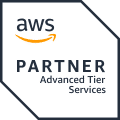Updated 29 April 2024
In Part 1 of our FedRAMP development environment guidance, we offered some tips and tricks for keeping dev outside a FedRAMP authorization boundary. Here in Part 2, we’ll discuss best practices that showcase maturity and increase the likelihood that an Authorizing Official (AO) will bless your approach to development security.
Deliberately Select and Apply Technical Security Controls
Just because we said we might be able to keep your development environment out of the authorization boundary does not mean you get to just let it run free. AOs are still going to give it a frosty thrice-over, looking for reasons to not trust the security of your development approach. This is especially true if you’re integrating with third-party tools, with lots of API connections out to various services.
So even if you’re trying to keep dev out of the FedRAMP authorization boundary, still apply as many of the technical FedRAMP controls as possible to demonstrate maturity. Consider comprehensive infrastructure scanning, strong access control and multifactor authentication, rigorous logging, and security monitoring. This will increase the odds of being able to keep the dev environment out of boundary.
CI/CD Pipeline Security
Demonstrating maturity is especially critical for organizations operating a modern Continuous Integration / Continuous Deployment (CI/CD) style approach to software development.
In theory, by integrating automated testing early in the development process, CI/CD approaches should both enhance and simplify security. However, too many organizations use CI/CD processes as an excuse to push sloppy code, based only the results of a few tricky-to-configure automated security tests.
So, there is some healthy skepticism from AOs about the security value of CI/CD-type approaches. By demonstrating advanced security maturity that spans the entire pipeline, development teams can help AOs grow comfortable with this modern approach to software development and release.
Avoid Insecurity-as-Code
Infrastructure-as-Code (IaC) based approaches simplify the challenge of dealing with large infrastructures and deployment. But deploying templates via orchestration tools like CloudFormation, Azure ARM, Terraform, or similar solution, runs the real risk of replicating known vulnerabilities throughout your environment.
So understand that an IaC-based approach will get a healthy dose of well-deserved suspicion. Document and be prepared to discuss all IaC templates in use, how they are selected and managed, what images are referred to by those templates, and why those should be trusted. You will also need to demonstrate a robust approach to scanning templates, one that acknowledges the challenges associated with scanning them. Consider using a variety of tools to provide overlapping coverage.
Implement Formal Threat Modeling
Threat modeling for software is a distinct discipline, far more advanced than a traditional risk assessment. Threat modeling dives deep on potential attack techniques, mapped to system processes and even specific code segments. As an example, your team might consider how every step in user auth could be attacked, or if your application might be vulnerable to some of the more esoteric injection-type vulnerabilities. You can also use the threat modeling process to demonstrate a thorough understanding of your IaC templates and security relevant configurations.
This degree of modeling shows off how well you know both your infrastructure and your code.
Consider Dedicated In-Boundary Staging
In-boundary staging areas sometimes conflict with fully automated CI/CD processes. However, in FedRAMP world it’s a good idea to include in-boundary staging – strictly isolated from the production system – as a landing pad for software coming from dev. This is especially true if you need to apply unique configuration sets for federal clients. Under some circumstances these will be considered federal information. In-boundary staging also facilitates integrity checking, and helps soothe the souls of risk averse AOs.
Delayed Federal Deployment
Many CSPs decide that it’s simply too difficult to apply FedRAMP controls universally across their federal and non-federal customers. So they spin up dedicated environments solely focused on federal clients. In this model the commercial prod environment acts as a test space. Code runs and undergoes at least one monthly scanning cycle and then deploys to the federal environment.
While this may slow feature deployment to federal clients, it often reduces an AO’s perceived risk. If you adopt this approach however, make sure to apply security patches to both environments, immediately as available.
Secure Coding Training
AOs love to see rigorous secure coding training for developers. The more technical, the better. Veracode’s training is pretty slick. On the free front, SAFECode’s content is pretty solid, particularly for introductory content.
Disciplined Manual Code Review
A code scanning and test process, even a purely automated one integrated into a CI/CD pipeline approach, will likely get you through an audit. However automated testing tools often miss vulnerabilities. So consider a disciplined peer/manual review approach, at least for modules that pop as high risk during threat modeling. This will show the type of maturity AOs expect.
A tip: manual reviews can occur outside the CI/CD pipeline. Provided the automated testing approach is rigorous, manual review could occur by a dedicated software assurance team post release. Customers inside and outside the federal government will rest a little easier knowing that black hats aren’t the only ones scouring your production code for vulnerabilities.
Looking Ahead
Some smooth security moves might help you keep dev out of the system boundary. For now.
But in the wake of NotPetya, SolarWinds, Microsoft Exchange and other supply chain attacks – not to mention the Biden Executive Order – dev is probably going to get sucked back into system boundaries in the not too distant future. When it happens, it could happen fast, with limited time for CSPs to comply.
Smart CSPs are preparing for this by looking past bare minimums for audits and implementing best practices that lay the groundwork for full compliance in the future. Contact 38North to learn more about how you can secure and manage your development environment in a way that maximizing FedRAMP success.
Frequently Asked Questions:
1. How do organizations balance the need to demonstrate security maturity in their development approach while also maintaining agility and efficiency in their CI/CD pipelines?
Balancing security maturity with agility and efficiency in CI/CD pipelines requires a strategic approach that integrates security seamlessly into the development process. Here are some key strategies organizations can employ:
- Shift Left Security: Implement a “shift left” approach to security, where security considerations are integrated into the earliest stages of the software development lifecycle (SDLC). By embedding security practices into the CI/CD pipeline from the outset, organizations can identify and address vulnerabilities early in the development process, reducing the risk of security incidents later on.
- Automate Security Testing: Leverage automation tools to conduct continuous security testing throughout the CI/CD pipeline. Automated security scans, such as static application security testing (SAST), dynamic application security testing (DAST), and software composition analysis (SCA), can quickly identify vulnerabilities in code and dependencies without slowing down development cycles.
- Implement Security as Code: Treat security configurations, policies, and controls as code artifacts that can be version-controlled, tested, and deployed alongside application code. Infrastructure-as-Code (IaC) tools like Terraform and AWS CloudFormation enable organizations to define and manage security controls programmatically, ensuring consistency and repeatability across environments.
- Provide Security Training and Awareness: Offer comprehensive security training and awareness programs to developers, DevOps engineers, and other stakeholders involved in the CI/CD pipeline. By educating team members about secure coding practices, common vulnerabilities, and emerging threats, organizations can empower them to proactively address security issues during development.
- Implement DevSecOps Practices: Embrace DevSecOps principles by fostering collaboration and communication between development, security, and operations teams. By breaking down silos and integrating security into every stage of the CI/CD pipeline, organizations can streamline security processes and reduce friction between development and security teams.
- Balance Security and Speed: Strike a balance between security requirements and the need for rapid software delivery. While security is paramount, overly restrictive security controls or cumbersome security processes can impede agility and hinder innovation. Organizations should aim to implement lightweight, scalable security measures that do not unduly slow down development cycles.
- Continuous Monitoring and Feedback: Establish mechanisms for continuous monitoring of security controls and metrics throughout the CI/CD pipeline. By collecting real-time data on security posture and performance, organizations can identify areas for improvement and make informed decisions about risk management and resource allocation.
- Regular Security Reviews and Audits: Conduct regular security reviews and audits of the CI/CD pipeline to assess compliance with security policies, standards, and regulatory requirements. Identify gaps, vulnerabilities, and areas for improvement, and take proactive steps to address them to enhance security maturity over time.
By adopting these strategies, organizations can effectively balance the need to demonstrate security maturity with the imperative of maintaining agility and efficiency in their CI/CD pipelines. This approach enables organizations to deliver secure, high-quality software at speed while minimizing the risk of security breaches and compliance issues.
2. What specific technical security controls should organizations prioritize when applying them to their development environments to gain the trust of Authorizing Officials (AOs)?
When applying technical security controls to development environments to gain the trust of Authorizing Officials (AOs), organizations should prioritize measures that demonstrate a strong commitment to security and compliance. Here are some specific controls that organizations should consider implementing:
- Access Controls: Enforce strict access controls to limit access to development environments to authorized personnel only. Implement role-based access control (RBAC) mechanisms to ensure that individuals have appropriate permissions based on their roles and responsibilities.
- Multifactor Authentication (MFA): Require the use of multifactor authentication for accessing development environments, especially for privileged accounts. MFA adds an extra layer of security by requiring users to provide multiple forms of verification before granting access.
- Network Segmentation: Segment development environments from production environments and other sensitive systems using firewalls, network ACLs, and VLANs. This helps contain potential breaches and limits the impact of security incidents.
- Encryption: Implement encryption for data at rest and in transit within development environments. Use strong encryption algorithms and protocols to protect sensitive data from unauthorized access and interception.
- Logging and Monitoring: Deploy robust logging and monitoring solutions to track and analyze activities within development environments. Monitor for suspicious behavior, unauthorized access attempts, and security policy violations in real-time.
- Vulnerability Management: Establish a vulnerability management program to regularly scan development environments for known vulnerabilities and security weaknesses. Prioritize patching and remediation efforts based on the severity of identified vulnerabilities.
- Secure Configuration Management: Implement secure configuration management practices to ensure that development environments are configured according to industry best practices and security standards. Regularly review and audit configuration settings to identify and mitigate misconfigurations.
- Secure Coding Practices: Promote secure coding practices among developers to minimize the risk of introducing vulnerabilities into software applications. Provide training and resources on topics such as input validation, authentication, authorization, and error handling.
- Container Security: If using containerization technologies like Docker or Kubernetes, implement container security controls to secure containerized applications and prevent container escape vulnerabilities.
- Patch Management: Establish processes for timely patching and updating of software and firmware components within development environments. Regularly apply security patches to address known vulnerabilities and protect against exploitation.
- Incident Response Plan: Develop and maintain an incident response plan specifically tailored to address security incidents within development environments. Define roles and responsibilities, escalation procedures, and communication protocols for responding to security incidents effectively.
By prioritizing these technical security controls, organizations can demonstrate a proactive approach to securing development environments and gain the trust of Authorizing Officials (AOs) responsible for evaluating and approving their security posture. This, in turn, enhances the organization’s overall security maturity and compliance readiness.
3. Are there any industry standards or frameworks that provide guidance on implementing formal threat modeling for software development, particularly in the context of FedRAMP compliance?
Yes, several industry standards and frameworks provide guidance on implementing formal threat modeling for software development, including those applicable to FedRAMP compliance. Here are some notable ones:
- NIST Special Publication 800-154: NIST SP 800-154, “Guide to Data-Centric System Threat Modeling,” provides guidance on conducting data-centric threat modeling for information systems. It offers a structured approach to identifying and mitigating threats to data assets within software applications, including those relevant to FedRAMP compliance.
- OWASP Threat Modeling: The Open Web Application Security Project (OWASP) offers resources and guidance on threat modeling for web applications. OWASP’s threat modeling methodology provides a systematic approach to identifying and addressing security risks in software applications, aligning with FedRAMP requirements for web-based systems.
- Microsoft STRIDE/DREAD Model: Microsoft’s STRIDE (Spoofing, Tampering, Repudiation, Information disclosure, Denial of service, Elevation of privilege) and DREAD (Damage, Reproducibility, Exploitability, Affected users, Discoverability) model is a widely used approach to threat modeling for software applications. It helps organizations assess and prioritize security threats based on their potential impact and likelihood of occurrence, which can be valuable for FedRAMP compliance efforts.
- CWE/SANS Top 25 Most Dangerous Software Errors: The Common Weakness Enumeration (CWE) list maintained by the MITRE Corporation, in collaboration with SANS Institute, identifies the most common and critical software security weaknesses. Organizations can use this list as a reference when conducting threat modeling to ensure that they address known vulnerabilities and weaknesses in their software applications, aligning with FedRAMP security requirements.
- MITRE ATT&CK Framework: The MITRE ATT&CK (Adversarial Tactics, Techniques, and Common Knowledge) framework provides a comprehensive matrix of adversary tactics and techniques used during cyber attacks. Organizations can leverage this framework during threat modeling exercises to identify potential attack vectors and simulate adversary behavior, enhancing their understanding of security risks and vulnerabilities within software applications.
- ISO/IEC 27001: While not specific to threat modeling, the ISO/IEC 27001 standard for information security management systems (ISMS) includes requirements and guidance related to risk assessment and treatment, which are foundational aspects of threat modeling. Organizations seeking FedRAMP compliance can use ISO/IEC 27001 as a reference for developing their threat modeling processes and procedures.
By leveraging these industry standards and frameworks, organizations can establish structured and effective approaches to threat modeling for software development, thereby enhancing security posture and compliance readiness, including for FedRAMP requirements.




